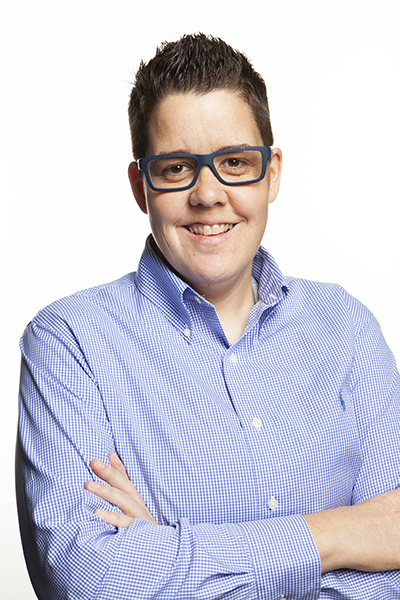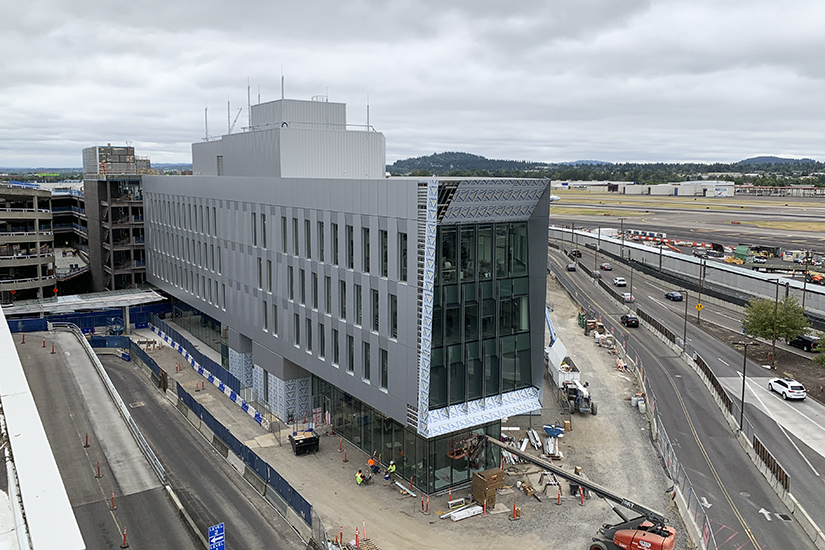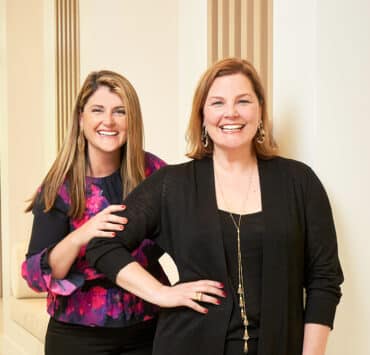|
Getting your Trinity Audio player ready...
|
It started as a normal morning on the jobsite.

Kaisey Kenkel, then a sprinkler fitter foreman, was working on a three-story condo in St. Louis close to an open elevator shaft. The previous crew should have blocked the area off with heavy boards, but instead, they had simply attached some caution tape. Kenkel, expecting to find solid boards, leaned over the open shaft to lower some equipment. The tape did nothing to prevent her 18-foot fall—she narrowly missed landing on piles of rebar and other junk littering the bottom.
Alone on the jobsite, Kenkel shouted for 45 minutes before a couple of passersby heard her and called for emergency services. She was diagnosed with a broken back.
After a long recovery period—multiple surgeries, a bedridden year, a body brace, and grueling physical therapy—Kenkel found the rigors of her former job were just too much. “I went back into the field,” she recalls, “in more of a managerial-type role. But most of the work still required heavy lifting, which I simply couldn’t do any longer.” She chose instead to return to school.
Kenkel earned her BS in mechanical engineering—with funding from the state’s Vocational Rehabilitation program—in an unusual way. “I enrolled at the University of Missouri–St. Louis, which has no engineering program. But under a ‘joint-engineering’ program, I took all of my classes at Washington University in St. Louis, which does offer that major. And when I graduated, the names of both schools appeared on my diploma,” Kenkel explains.

After moving to Florida for a fresh start, Kenkel learned that car rental company Hertz was moving its headquarters to nearby Estero and applied for a spot as a planning designer/CAD operator. “With my background and experience, I was really overqualified for the job, but hoped it could be a foot in the door,” she recalls.
Soon enough, real estate agents and landlords were sending her sketched-out dimensions and other specs. “I used CAD to produce the plans needed for pricing and ordering,” Kenkel says, and within a few months, her speed and accuracy in generating those documents—combined with her engineering knowledge—was recognized company-wide. And when the construction manager left the company in 2015, Kenkel was the first choice to take their place.
For the next several years, Kenkel oversaw all Hertz construction projects in the southeast US—on paper, anyway. In reality, she became involved in another half-dozen projects in other areas. “When things slipped a bit in other regions, they came to me. They knew I was good at getting things back on track, and was willing to help when needed,” Kenkel says.

In 2019, a new team leader promoted Kenkel to director of design and construction, responsible for all project managers and the design team. By 2020, she had replaced him as senior director.
While the “construction” aspect of the job is self-evident, the “design” portion is more fluid, Kenkel says. “We try to standardize as many elements as possible, to keep a uniform ‘corporate’ appearance, but everything at a given location is custom-made.”
That covers all the furnishings, paint colors, tiles design, booth arrangements, even signage. “The available space at each airport or freestanding facility varies, and many airports have restrictions we have to follow,” says Kenkel, adding that it can become somewhat frenzied.
Over time, the senior director has developed a sharp eye for designs and layouts. “I’ve handled so many projects that I’ve learned what works and what doesn’t, so I’m able to look at a 100,000-square-foot airport space and come up with an effective floor plan while I’m at my desk,” she says. “Plus, any feedback we receive about a facility helps us improve our future work.”

Every project is a collaborative effort among her own group and Hertz’s marketing, operations, finance, facilities management, and other functions.
But the onslaught of the COVID-19 pandemic and the rapid decline in travel posed new challenges. The company, which also owns Thrifty Car Rental and Dollar Car Rental, had to close some airport locations for the latter two brands and combine the businesses with Hertz. “We really had to scramble to design, produce, and install new signs that directed customers to go to the Hertz counter,” Kenkel says.
And ongoing construction projects, including new facilities in California, Portland, Honolulu, and Cincinnati, just kept moving. “We try to order our materials well in advance, but COVID has affected delivery schedules. At the same time, airports have mandatory opening dates for these projects, and we must adhere to them.” But as demonstrated by Kenkel’s resilience in the past, she’s never one to give up. “If we lack certain material, we find a solution that will let the facility open on time.”
The senior director is proud to support Hertz because the company in turn supports her. She notes that as a member of the LGBTQ+ community, she noticed corporate support was not as much of a priority when she first joined. But now, “the company becomes more involved every year,” she says. “And that’s a positive thing. Everyone needs to feel like they belong.”

A Drive to Do More
Kaisey Kenkel has a long history of helping others. When she was 18, her mother got her involved with the Leukemia & Lymphoma Society.
“She had a friend whose 11-year-old daughter died from leukemia and called it ‘the saddest thing I ever witnessed.’ I’ve been a volunteer with the group ever since,” says Kenkel, who routinely raises money and even completed a 100-mile cycling event in Las Vegas. “That was the hardest thing I’ve ever done,” she adds.
She’s also devoted to her French bulldog, Frankie.
“I got him from a pet store when I moved to Florida,” Kenkel says, “even though he had IBD, many allergies, and other ailments. His medical bills have been high—I even hired a doggie nutritionist for him—but he is absolutely the happiest boy you’ll ever meet. He’s what keeps me going!”


